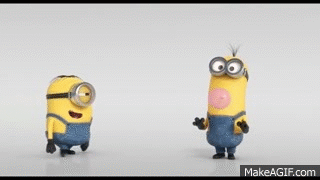Pop A Bubble With P
Emergent Literacy Design
Rationale: This lesson will help children identify /p/, the phoneme represented by P. Students will learn to recognize /p/ in spoken words by learning a meaningful representation (popping bubblegum) and the letter symbol P, practice finding /p/ in words, and apply phoneme awareness with /p/ in phonetic cue reading by distinguishing rhyming words from beginning letters.
Materials: Primary paper and pencil; chart with "Peppa Pig Pops the Perfectly Pink bubblegum into Perfect Pieces"; drawing paper and crayons; Princess and the Pea (Kolanovic Dubrava.2018); assessment worksheet identifying pictures with /p/, note cards with the words pig, apple, page, person, and parrot.
Procedures:
1. Say: Our written language is a secret code. The tricky part is learning what letters stand for – the mouth moves we make as we say words. In this lesson, we are going to learn to spot the mouth move /p/. We spell /p/ with the letter P. /p/ sounds like the popping of a piece of bubble gum.
2. Teacher says: Today we’re going to pretend like were chewing bubble gum and blowing a bubble. Now, what sound does the bubble make when it pops? Correct /p/ like pop pop pop. When we make the /p/ sound, we put our lips together and let out a puff of air between our two lips.
3. Teacher says: We are going to find the /p/ in a new word. “champ.” Let’s say it slow so we can find the /p/. cccchhhh-aaaa-mmm-pppp. Hear it? Is it at the beginning or the end? Where was your tongue when you heard /p/?
4. Tongue Tickler: Peppa is a pig who loves to play. Peppa’s parents gave her a piece of pink bubblegum. Peppa proceeds to puff and puff air into the bubble. “Peppa pig pops the perfectly pink bubblegum into perfect pieces.’ Peppa pouts about her burst bubble. Teacher says: (after reading tickler) Let’s say the tickler three times. Now, we want to say it again while stretching out the /p/ sound and make our popping bubblegum hand gesture.
5. Get out the primary paper. Have students write P 10 times. Teacher says: Let’s write “p” first you are going to start with the p on the fence and bring the straight line to the bottom of the ditch. Now were going to make the little circle from the fence to the side walk, connecting to the line we just drew. Everyone show me your P! Now let’s draw nine more as pretty as possible.
6. Teacher is going to choose students to pick the words that have the /p/ sound in them. Example words: Is /p/ in- police or officer? toucan or penguin? purple or orange? stop or begin? cheap or affordable? Teacher says: what words do you hear your mouth move to make the /p/ sound? Pop your bubbles with you hear the /p/ sound.
7. Teacher says: Let’s look at a fun book, Princess and the Pea. This is a book is about a Princess who tries to sleep but no matter how many mattresses she puts on her bed she can’t sleep. You’ll have to keep reading to see why the Princess can’t sleep! Now every time you hear the /p/ in the book, make the bubble popping gesture with your hands. Then I will have the students draw the Princess and the pea under the mattresses and what they thought about the book.
8. Use words such as: pink and stink. pale and male. pant and can’t. more and poor. With these words have students decide which ones start with - between the rhyming words. Teacher says: I am going to read you some words and you can decide which one has the /p/sound in this word. Think about your bubble popping. Make the hand gesture if you need to.
Assessment: Students will do a worksheet and color in the words that start with p. Then, they will write out all of the words that they colored in. Students will finish and talk in groups about the words that they colored in while teacher walks around to make sure they got all of them right and are having intelligent conversations.
Resources: John David Phillips, Clowns Climbing with C
https://johndavid2332.wixsite.com/jdp0058/emergent-reading
Assessment Worksheet:
https://www.superteacherworksheets.com/phonics-beginningsounds/letter-p_WFMWZ.pdf?up=1466611200
Return to the Ingenuities Index
